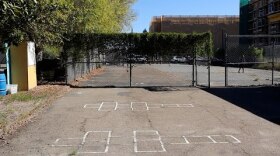What insight could a middle age geography professor who taught not fought during World War II give us about combat veterans. Book discusses a newsletter said to hundreds of soldiers overseas by that professor. It was called the Aztec newsletter. He asked the student to send them letters during his World War II enlistment and received a more than 4500 letters from around the world including from a [ NULL ] prisoner. Joining me is Lisa Shapiro , author, "Aztecs in Amber" . Welcome to the program. Thank you so much. The title of your bug as Texan Amber implies that the newsletter preserves people's experiences during that war. Letters capture these unique moments in history and their often written in the present tense. So you get these very real emotions coming through. I see each letter as a piece of a mosaic and when you tape them together they reveal what I think his entire history of World War II and the voices of these very articulate young men and women. What sorts of things that they share in these letters? They were collected into this newsletter which was sent out all over the world. I think their first and foremost priority was to boost what another's morale. They really thought it was a way of staying connected. They looked forward to knowing where everyone was. You have to remember this was done by hand. The letters were handwritten and so there first and foremost priority was staying connected with one another. I think it turned into something much bigger than that. I think the whole community of San Diego stayed grounded through these letters. San Diego stayed played an important part of that. You feature a lot of letters in this book. Can you share when with this quick Absolutely this letter was written by a Lieutenant and it is from 1940 for. Dated April 20 he says sometimes the going gets pretty tough even on a battle wagon. You feel discouraged and disgusted. And somehow the word newsletter flashes in your brain, and you pick up an old issue at random and start thinking of the other fellow. You think of the guy who used to drop by for you every morning and drive you out to state. It wasn't much of a car, and we had engine trouble and I don't recall ever making the 8:00 class on time. You can't help thinking of what a swell guy he was and how badly he felt when you learned that he had been killed in a bombing raid over Germany. You read about others who have been killed or wounded. And your read about others weapon away from the states a lot longer than you have. It is then that you realize that things are not tough at all and that you've just been kidding yourself. That was a letter from the Aztec newsletter that was sent around the world during World War II and it comes from the new book as Texan Amber read by the author Lisa Shapiro. Who was Lauren Chester post the professor who organize all these letters. What was he like? He was a really unique individual. He was very determined and he had a commitment and dedication to his students and he had been a veteran of World War I and also had studied the Louisiana Cajun. So I think he understood how war makes people migrate. I believe that when his students started migrating around the world to go into combat, he thought it was his duty to follow them and stay connected with them and that is what he did. Something of a character, is that right quick He spoke Cajun French and students always talked about going by his office. The also like to watch them practice rope spitting tricks. He couldst been a rope and he would often put on demonstrations. You are a business professor. How did you come to write a book about World War II history? I teach at San Diego Mesa College which is a military friendly campus and ever since I started teaching there hasn't been a day where I don't have veterans in my classroom. Teaching better and is a very important part of what I do. I was studying literature and I wanted to better connect with my student veterans and better understand that. I actually learned about this letter collection through KPBS segment that they filmed some of the letters in the special collections here. The beauty of special collections is they have a reading room with the public that is where the public in went. I sat there every Friday afternoon for about 2 1/2 years and I read my way through for thousand 500 letters. How did reading these letters change you? It changed me in a way that I never expected. I don't come from a military family. It is not my background and I think I know just now better understand the voices of students in the voices of veterans. I listen to my students in a different way now because I've heard so many voices and that's the beauty of the letters that come alive for us today. And what they talked about our very much present for us today. I've been speaking with Lisa Shapiro, author, "Aztecs in Amber" . The book is due out next year. San Diego State has uploaded thousands of her letters online. You can find a link on our website at KPBS.org. Thank you so much. Thank you.
World War II soldiers from San Diego, stationed everywhere from North Africa to Normandy, didn’t just write their families and friends when they had a spare moment during the war.
The soldiers who attended San Diego State also made sure to write to their old geography professor, Lauren Chester Post.
Post’s initial request to his students to write him in 1942 eventually yielded more than 4,500 letters over five years, which he collected in monthly newsletters that he mailed back around the world.
Issues of “The Aztec News Letter” and the original letters themselves, are still held at SDSU. Lisa Shapiro used those archives for her forthcoming book about Post and his students, “Aztecs in Amber.”
Soldiers openly shared their fears with Post, and said they found the monthly newsletter from fellow soldiers a welcome relief. Lt. Bob Noel, stationed on the U.S.S. Mississippi wrote to Post on April 28, 1944:

"Sometimes, doc, the going gets pretty tough – even on a battlewagon – and you feel discouraged and disgusted. And somehow the word 'Newsletter' flashes in your brain, and you pick out an old issue at random and start thinking of the other fellow – fellow Aztec. You think of the guy who used to drop by for you every morning and drive you out to State. It wasn’t much of a car, and we invariably had engine trouble, and I don’t recall ever making an 8 o’clock class on time. But you can’t help thinking of what a swell guy he was and how badly you felt when you learned that – that he had been killed in a bombing raid over Germany.
You read about others who have been killed or wounded. And you read about others who have been away from the States a hell of a lot longer than you have. It’s then that you realize that things aren’t tough at all – that you’ve just been kidding yourself!"
“There’s a very touching column that comes later where he thinks back and says, ‘I remember what it was like to be alone at night on a dark watch,’” Shapiro said.
Shapiro joins KPBS Midday Edition on Thursday to discuss Post's work and how the newsletter became so popular.







